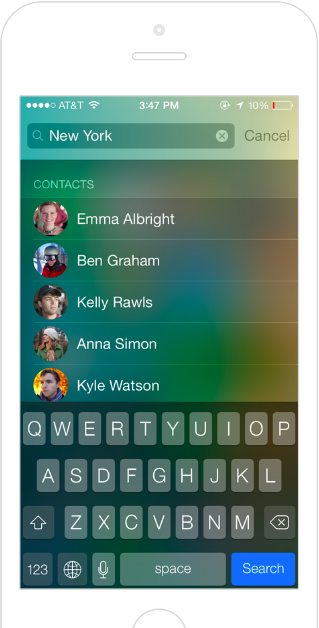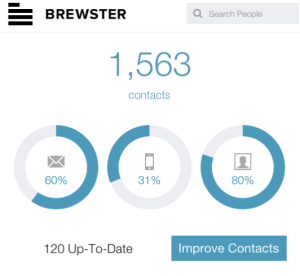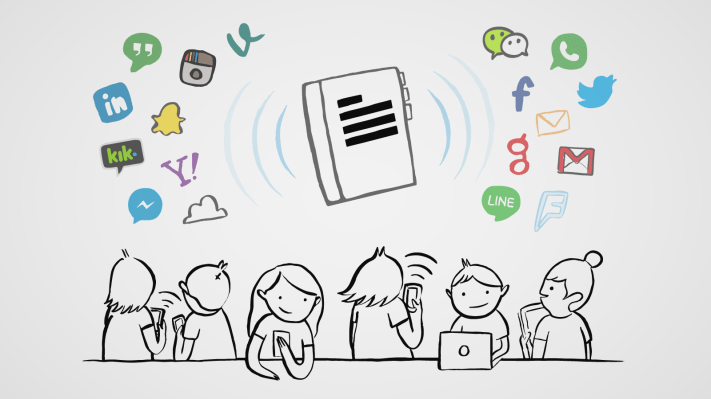The average mobile-carrying consumer today has around 1,600 contacts when apps, email and a phone’s address book are added up. A startup called Brewster wants to make that list easier to use.
Launched as a native app in 2012 with a mission to transform your address book by merging your phone and social networking contacts into a single app, and then letting you search them by more than just names but other parameters (such as, maybe, friends who golf), Brewster is today unveiling a new build of the product that turbo-charges that mission. Now it is a web-first, cloud-based product — it’s not even updating its native apps just yet.
 And through the introduction of a new, machine-learning based technology it calls Streaming, Brewster will go one step further.
And through the introduction of a new, machine-learning based technology it calls Streaming, Brewster will go one step further.
It will now work behind the scenes to power contacts across all of your devices that use iCloud and Google Accounts, as well as apps that you use on those devices, from Gmail and Mac Mail through to your phone’s native dialling, messaging and email apps. And it will now also work in the background to suggest more contacts for you on different social messaging apps like Snapchat, WhatsApp and more.
Brewster is backed by Union Square Ventures — with the exact amount of funding never disclosed — and back in 2012 USV’s Fred Wilson waxed lyrical about the ambition and early success the startup found under founder and CEO Steve Greenwood.
He wasn’t the only one to sing Brewster’s praises. But more recently the company has been keeping its head down — because it has been working on this new build.
“We weren’t delivering on what we needed to deliver to people,” Greenwood explained to me in an interview this week. “That’s why we went quiet.”
The crux of the challenge is one about how we use our smartphones: we have become very app-centric, almost to the point of being happy to tolerate the contact silos that are created as a result.
This meant that Brewster’s original approach of providing an address book was really only winning half the battle. The real utility would come when that kind of information could come up in whatever app someone happened to be using — because at the end of the day, we may be happy to live with silos, but we still want them to be useful and effective.

“We had to build the address book before we figured out how to sync it,” Greenwood says. “It remains a huge problem for users, we use multiple apps and services and you just want your contacts wherever you are.”
He also points to the evolution that we’ve seen in the last couple of years, with a rapid rise of apps like WhatsApp and Snapchat that were significantly less of a presence before but rely more on a decent phone-based contacts book than some of the other apps they’ve disrupted. “WhatsApp [now with 600 million users] has become one of the big movers in social messaging and Snapchat has also blown up and they’re built on the back of contacts,” he says.
Behind the scenes, Brewster has a machine learning team, advised by Hugo Liu, that has been rebuilding and expanding what Brewster does on a new framework, based on CardDav.
It also leverages big data analytics to fill in holes in the wider graph of users — effectively working out ways of using one person’s social graph to fill in the graph of a contact.
For the average user, Greenwood tells me that the new Brewster will be even faster at going through and merging your contacts and figuring out smart connections between them.
It will also now autofill into a variety of applications, from messaging and phoning through to email. And you will get much richer lists from which you can use to create lists of contacts on messaging apps like WhatsApp that rely on your phone book.
Brewster’s architecture is based around network effects. That is to say, the more contacts you have and the more contacts that are fed into its system, the better it will work. The company is not yet releasing numbers of total users — I think it’s under 1 million. Greenwood says that it’s already collected over 1 billion data points from its users to fill out its users’ contact universes.
Greenwood would not tell me if Brewster is now looking for more funding now that it is putting its head above the parapet again — or log cabin, as the case may be (they’ve just built one in the middle of their open-plan office so that they have a separate room for more private meetings) — but the company is now being a bit more forthcoming about how it plans to make money.
While the core Brewster app will “always be free”, there will be some new features for specific premium users — specifically business users — that Brewster will be turning on, likely sometime next year. He says Dropbox has shown the way forward in how to do this:
“Dropbox has proven that you can have enterprise and consumer models sit together,” he says. “Only around 3% of its individual users pay, and they make money from businesses. I think we could have a nice product offering if we create directories for businesses. That would allow us as individuals to have a free service.”
There are no deals along these lines yet. “It’s not on the immediate horizon,” he says. “The immediate plan is to release this service, get user adoption and grow and get scale. There will be plenty of business opportunities down the line.”
